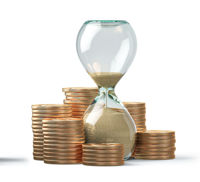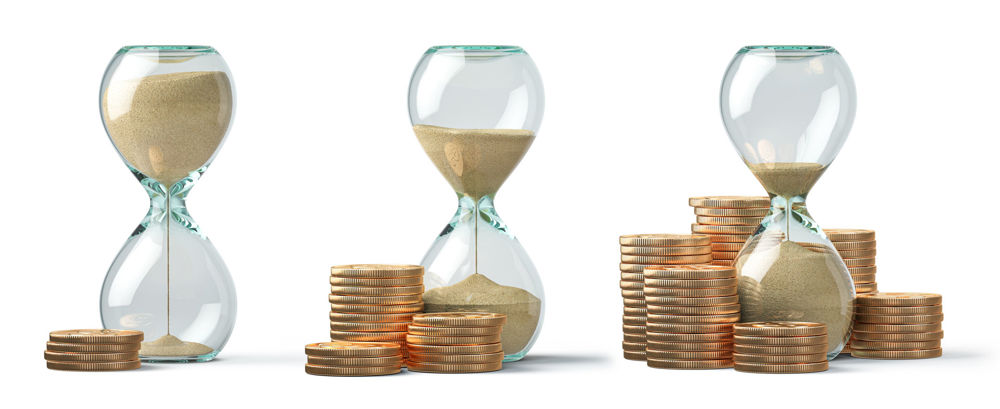Posted on September 15, 2021


Two different gold prices exist at any given time: the spot price of gold and the futures price of gold. These two prices consider the various markets on which gold trades and will likely differ, sometimes significantly, at any given moment. In this article, we will examine how the spot and futures prices of gold differ, the factors affecting their price quotes, and why they exist in the first place.
The spot price of gold is the most exact price of gold at this very moment. This is the price for acquiring gold “on the spot” — hence its name. The spot price is similar to a stock price quote which identifies the current price of one share of a publicly listed stock at any given time. The spot price is a snapshot or a single frame from a movie: it’s a constantly changing number, updated from second to second. When someone references the “price of gold,” you can be reasonably confident they’re talking about its spot price.
Gold prices in the spot market may be denominated in grams or kilograms. However, the most common quote for the spot price of gold is per ounce (specifically, per troy ounce, 31.1035 grams, not the common or avoirdupois ounce of 28.3495 grams. Yes, precious metals are weird.)
However, don’t ever expect to be able to buy gold at its spot price. That’s because gold dealers, like all other retailers, charge a markup for gold transactions. This drives up the sale price above the current spot price for buyers. Therefore, investors and gold enthusiasts should use the spot price of gold as a reference point for what they might pay for gold right now, but not the actual price they will receive when it comes time to make a purchase. Typically the only way to get spot pricing is to buy “paper gold” or “digital gold” or some other financial derivative, which is usually priced at spot but obviously is not tangible, physical gold.
Like any other public exchange, the gold spot market operates in a standard bid/ask model. The bid price is the highest price a potential buyer is willing to pay for gold, while the ask price is the lowest price a seller is willing to sell their gold.
The price difference between the buyers’ bid and sellers’ ask prices is known as the bid/ask spread. These are usually rather narrow, but in times of extreme demand or very limited supply, a large gap can form between the bid and ask prices. As market liquidity dries up, buyer and seller premiums increase.
The spot price of gold is calculated twice daily by the banking members of the London Gold Pool in what’s known as the London Spot Fix. These institutions — which are a part of the London association managing bullion markets — denominate the price of gold in various currencies like the U.S. dollar, British pound, and euro. They publishes the gold spot price daily on its website.
The spot price uses the upcoming futures contract with the most volume — known as the front month — to factor in its prices. The spot price also considers all gold production fees such as mining, refining, shipping, handling, and dealer margins, which affect the price of gold.
Like all commodities futures contracts, buyers lock in a price today for delivery of gold at a specified future date. If the spot price is similar to a stock quote, the futures price is more akin to stock options (puts and calls) that factor in the future potential value of a stock and its current share price.
With most commodities futures, a contract is a purely financial bet. Traders might buy soybean futures or West Texas Intermediate crude oil futures in the hopes the contract value will rise. Then they can sell the contract and pocket their profit. Virtually no one buys a commodity futures contract with the expectation of receiving a shipment of 16 tons of nonfat dry milk powder or 15,000 bushels of hard red winter wheat. However, with precious metals, it’s feasible to take physical delivery of your commodities when the contract closes...
When purchasing gold on the futures market, many factors that affect gold’s price are considered. Combined, these factors resulting from buying and holding physical gold is called the convenience yield. Some of the factors the go into the convenience yield include:
Because futures contracts are time-based, their price also factors the estimated supply and demand of the precious metal from now until the contract’s expiration. Therefore, the futures price of gold considers all of these additional time-based factors (and their uncertainties), along with other costs, to provide a price for gold in today’s futures market based on these conditions.
Gold market traders influence the futures price of gold on exchanges like the CME exchange. This means anything that impacts the purchasing habits of gold traders — like gold supply and demand, currency devaluation, macroeconomic factors, and so forth — will influence the futures price of gold. Because futures contracts vary in both duration and size, there is a broader range of gold futures prices quoted at any given time.
Futures traders use margin or leverage to increase their buying power in an attempt to make larger profits. Margin is a downpayment — usually, a certain percentage of a given futures contract — required from the buyer, paid upfront to the seller. Margin payments are generally made through a trusted third party to ensure the protection of both buyer and seller.
Here’s how it works...
Imagine you wanted to invest $1,000 in a gold futures contract, and it only required a 10% margin. In this case, your $1,000 investment would afford you $10,000 of gold futures. If the price of gold then appreciated by 10%, you would profit $1,000 ($10,000 futures contract * 10% gain), but if you had invested this same capital in the spot market, you would only have earned $100 ($1,000 investment * 10%). This investment strategy might sound foolproof, but the downside risk in futures using margin is much greater.
If the price of gold depreciated by 10% in this exact scenario, you would likely lose your entire $1,000 investment (unless you add to your margin), whereas you’d only lose $100 in the spot market ($1,000 investment * -10%).
Both spot and futures prices vary constantly, but there is a strong correlation between the two. The difference in price between these two is called the basis. The spot price of gold heavily influences the futures price. The futures price of gold can be calculated using the following formula (note: Euler’s number, usually represented as e is a mathematical constant):
Futures price = (Spot price + storage and other costs) * Euler’s number^(risk-free rate * time to maturity)
In simpler terms, this equation states that the futures price of gold is a factor of the spot price along with any costs associated with the gold, multiplied by a constant variable which is a factor of the risk-free interest rate and duration of the futures contract.
And if you think about it for a moment, this makes sense. What someone is willing to pay for gold in a futures contract must account for these time and expense factors today to determine the most optimal price.
Because futures contracts take into account more costs than the spot market, the futures price of gold is often higher than the spot price; however, this is not always the case. If future expected supply and demand are such that gold will be less desirable in the months ahead, the futures price could dip below the spot price of gold.
As you can see, the spot price and the futures price of gold are highly correlated, forever tied to one another. The spot price gives the most current price of gold at this very moment, while the futures price denotes the price of gold based on a given futures contract where buyer and seller transfer gold in the future. Gold traders use both of these prices to determine how they believe the price of gold may change down the road.